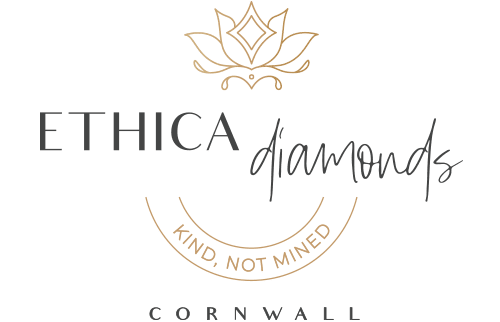DIAMOND BUYING GUIDE
In order to ensure you are buying the right diamond for your loved one, there are several factors to consider. You may have heard about the 4Cs of diamond education, but here, we guide you through the best diamond buying guide, our 7Cs, factors that you should consider before making your gemstone or lab diamond purchase. The only characteristic not influenced by nature, the cut determines the light dispersion of the diamond which has the greatest influence on overall appearance. It is the greatest influencer of brilliance and sparkle regardless of the shape of a diamond.
The purpose of cutting any diamond is to maximise refracted light, and a well-cut diamond will have brilliant sparkle and fire, because it captures all the available light and bounces it back to the eye. If a cut is too deep, the light will be reflected out of the side of the diamond, whereas if it is too shallow, it will be lost from the bottom. During the 1980s in Japan, it was discovered that when a round brilliant diamond with exceptional symmetry was viewed from the bottom through a special viewer, a pattern of hearts could be seen, and when viewed from the top, showed eight grey arrowheads. Diamonds displaying such exceptional symmetry account for less than 1% of all diamonds cut. The Hearts and Arrows cut has 58 facets and to achieve it and they are cut under 100x magnification.
The different points of views of a hearts and arrow cut diamond
Whether you are looking to buy one of our lab grown diamonds or the Ethica Diamond; both options are individually hand cut to the highest diamond grading guidelines and both are available with the Hearts and Arrows specification. There are many ways of cutting diamonds, some of which are more suited to different styles (eg Art Deco), or shapes of jewellery. The Ethica Diamond and our lab grown diamonds can be created in a wide variety of shapes.
CLARITY
When diamonds are formed, deep underground and under extreme pressure and heat, imperfections in the crystal structure can form and mineral impurities become trapped inside the stone. our lab grown diamonds are available in the full spectrum of clarities, from IF- SI2, so you can select a clarity to perfectly suit your preferences. Ethica Diamonds on the other hand - a man-made stone - are consistent in clarity, with every stone being VVS1 clarity, which is virtually flawless. Imperfections in diamonds make the lattice structure weaker so it is important to select a diamond with a good clarity grade, to ensure the integrity of the stone is at its best.
The world of diamonds determines the colour by comparing a diamond against a master set of diamonds of different colours. This colour grading of a diamond refers to its lack of colour and for white or colourless diamonds, the diamond industry has adopted an alphabetical colour scale from D to Z, with D as the highest grading, being the whitest. Fancy-coloured diamonds such as pinks and blues are graded separately. Without comparing diamonds side by side, it is very difficult to see the difference between a D and a G. As you go down the scale past J, diamonds start to develop a yellow or brown tint, which are less desirable. The key question is where to draw the line when choosing the colour of a diamond - how far can you compromise colour before the diamond is too tinted? The answer to this question is usually relative to your budget and personal preference.


